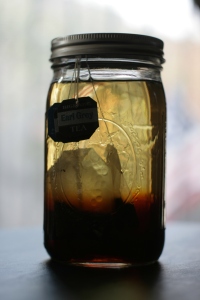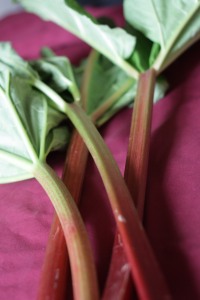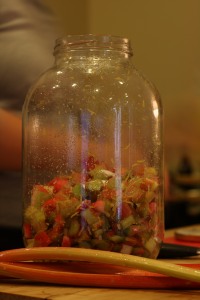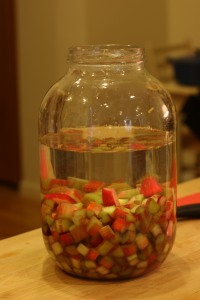Inspired by last winter’s soup swap, my friend Elena asked a little while back if we could do a booze swap, tasting and trading homemade infusions. It sounded like a great plan (what could be better than sharing creativity in cocktail form?), but there was a minor glitch. Some of the people who wanted most to participate had not infused liqueurs before and weren’t quite sure how to go about it. And so, a plan was born: a two-part party with infusion taking place in Part I, an exchange of boozy goodness in Part II.
Part I, the workshop portion, took place yesterday. Infusions were made, drinks were drunk, good times were had. My house still smells like ginger, zesty and fresh.
I highly recommend throwing your own infusion party! Here is how to do it:
Step 1: Roll Out the Beverages.
I had some previously made infusions on hand. Most of them were on the sweeter side — rhubarb, hibiscus, ginger-peach, and earl grey. These I set out with a pitcher of OJ, a pitcher of lemonade, and some seltzer. Nothing too fancy, just some general mixers to cut the drinks a bit so we weren’t just slugging back multiple tastings of uncut liquor. I had a more savory concoction, too: a caraway-dill vodka with a hint of garlic. This I mixed with the meager drop of vermouth I had on hand and a dash of olive juice for a strong and pickly dirty martini. One guest claimed that the caraway-dill vodka was great with orange juice, but I’m not sure I believe him.
Step 2: I Love Jars. Get Some Jars.
We asked participants to bring a bottle of booze and some flavors they would like to work with, and we provided jars to make things a little easier.
Step 3: Permission to Wing It.
Because I was in a period of transition (AKA post-school, pre-state-licensing floundering) when the booze party plan was hatched, we decided to call this shindig a workshop. I was super psyched to take on a leadership role and teach some things, and I typed up some official sounding language in the invite about how we would discuss infusion and sample some past projects before assembling our concoctions. It all sounded very orderly. In fact, it was not very orderly at all, and I wouldn’t have it any other way. I vaguely pointed to the line-up of infusions and mixers, and people poured drinks and rolled up sleeves and started slicing and dicing fruits and veggies and spices on the kitchen island, tumbling pretty colors and smells into jars.
I offered a little bit of advice as things trucked along: the zest of citrus fruits is the best part to infuse. When using super crazy hot peppers, taste your infusion hourly to make sure it’s not getting out of hand. Fruits and veggies should be ready to strain in a couple of weeks. Teas will only take a day or so. But mostly, we all just winged it, ooh-ing and ahh-ing at each other’s colorful combinations, lining up shiny jars.
In a few weeks, we will strain our drinks, add some sugar as appropriate, reconvene for swapping and sharing, maybe tie some ribbons on bottles for holiday gifts, resume our kitchen-creative chatter. I look forward to tasting some of these blends next month — I’m eying the vanilla-pear, various gingery concoctions, all of them, really, in all their improvised glory. I can’t wait to taste how they turn out!


















